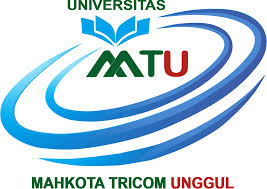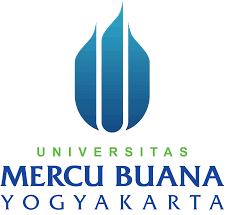Ethnobotany of Medicinal Plant Diversity as A Traditional Medicine in Bugbug Karangasem, Bali, Indonesia
DOI:
https://doi.org/10.55927/ijsmr.v3i1.12852Keywords:
Ethnobotany, Medicinal Plants, Traditional KnowledgeAbstract
Traditions and cultures used as tourism assets can ignore traditional practices with a concurrent loss of traditional knowledge. This study aims to reveal the traditional knowledge of medicinal plants used by the Bugbug community through analysis of the traditional knowledge of the diversity of medicinal plants, the fidelity level (FL) and Index of Cultural Significance (ICS) of medicinal plants. The study was conducted in Bugbug Village, Karangasem, from May to July 2022. Data were collected using qualitative methods through semi-structured interviews, moderate participation observation, and documentation. Key informants and respondents were selected using purposive and snowball sampling; 10 informants and 48 respondents were obtained. The fidelity level was calculated by FL; and cultural importance by ICS. The level of traditional knowledge of medicinal plants was measured by the Phillips and Gentry equations and analyzed by the Kruskal Wallis and Mann Whitney Test. As many as 124 species in 46 families are found at Bugbug Village. The best represented families were Fabaceae. Leaves are the most widely used plant parts for traditional medicine. The highest habitat is obtained from the roadsides. In terms of the life form, most of the used species were herbaceous. Traditional knowledge between age groups differs significantly. In contrast, traditional knowledge of gender was not found to be different. The highest fidelity levels are Piper betle L. and Imperata cylindrica L. And the most ICS is Piper betle L
Downloads
References
Adiputra, N. (2017). Functions of Fruits and Leaves of Plants in Balinese Culture A Study of Ceremonial Plants. Sustainable Earth Journal 17(2),118-125.
Alexiades, M. N., & Sheldon, J. W. (1996). Selected guidelines for ethnobotanical research: a field manual. New York Botanical Garden.
Azis S, Zubaidah S, Mahana S, Batoro J, Sumitro SB. (2020). Local knowledge of traditional medicinal plants use and education system on their young of Ammatoa Kajang tribe in South Sulawesi, Indonesia. Biodiversitas 21(9),3989-4002.
Batoro J, Siswanto D. (2017). Ethnomedicinal Survey of Plants Used by Lokal Society in Poncokusumo District, Malang, East Java Province, Indonesia. Asian J Med Biol Res, 3 (2), 158-167
Batoro J, Indriyani S, Yanuwiadi B. (2017). Ethno-ecology of Komplangan Field of the Bromo, Tengger, and Semeru Area in East Java:A Qualitative Approach. Journal of Biosaintifika. 9 (1),41-48
Boesi A. (2014). Traditional Knowledge of Wild Food Plants in a Few Tibetan Communities. Journal of Ethnobiology and Ethnomedicin, 10(75), 119.
Bouyahya A, Abrini J, Et-Touys A, Bakri Y, Dakka N. (2017). Indigenous knowledge of the use of medicinal plants in the North-West of Morocco and their biological activities. Eur J Integr Med 13, 9-25
Bruyere, B.L., Trimarco, J., Lemungesi, S. (2016). A Comparison of Traditional Plant Knowledge Between Students and Herders in Northern Kenya. Journal Ethnobiol Ethnomed,12(48), 59-64.
Caballero-Serrano V, McLaren B, Carrasco JC, Alday JG, Fiallos L, Amigo J, Onaindia, M. (2019). Traditional ecological knowledge and medicinal plant diversity in Ecuadorian Amazon home gardens. Glob Ecol Conserv 17, 1-23.
Elisa I, Ervizal A.M.Z, Agus H, Nandi K. (2015). Ethnobotanical Knowledge of the Manggarai Tribe and Its Implications for the Utilization of Forest Plants in the Ruteng Mountains. Journal of Indonesian Agricultural Sciences 20(3), 171.
Fitri, A.N, Asyiah, I.N, Pujiastuti. (2014). The Benefits of Betel Leaf (Piper betle L.) As Traditional Medicine for Internal Disease in Kalianget District, Sumenep Regency Madura. Scientific Articles of Student Research Results
Gallois S, García R.V. (2018). Children and ethnobiology. J Ethnobiol 38 (2), 155-169.
Gratitude, R., Alam, G., Mufidah, A. R., & Tayeb, R. (2011). Free Antiradical Activity of Some Plant Extracts of the Familia Fabaceae. JST. Health, 1(1), 1411-1674.
Hariyadi B, and Ticktin, T. (2012). Uras: Medicinal dan Ritual Plants of Serampas, Jambi Indonesia. Jurnal ethnobotany research and applications 10, 133-149.
Kandari, L.S., Phondani, P.C., Payal, K.C., Rao, K.S., and Maikhuri, R.K. (2012). Ethnobotanical Study Towards Conservation of Medicinal and Aromatic Plants in Upper Catchments of Dhauli Ganga in the Central Himalaya. Journal of Mountain Science, 9, 286-296.
Khan, I., Abdelsalam, N.M., Fouad, H., Tariq, A., Ullah, R., Adnan, M. (2014). Application Of Ethnobotanical Indices on The Use of Traditional Medicines Against Common Diseases.Evidence-Based Complementary and Alternatives Medicine. 2014:1-21. Feb.-May. [Cited 2019 Nopember 20]. Available from: URL: https://doi.org/10.1155/2014/635371
Mesfin K, Beyene D, Tesfaye, Addise D, Amare M, Biniyam D. (2018). Drug-Resistance Patterns of Mycobacterium Tuberculosis Strain and associated Risk factors Among Multi drug Resistant Tuberculosis Suspected Patients from Ethiopia. PLoS ONE 13(6), e0197737.
Nasution A, Chikmawati T, Walujo EB, Ervizal AMZ. (2018). Empirical Utilization of Medicinal Plants in the Mandailing Tribe in Batang Girl National Park, North Sumatra. Indonesian Journal of Biotechnology & Bioscience 5(1):64-74.
Nurdiani N. (2014). Snowball Sampling Techniques in Dry Land Research. Comtech 5 (2), 1110-1118.
Picard M. (2018). Touristification and Balinization in A Time of Reformasi, Indonesia and The Malay World. ASEAN Journal on Hospitality and Tourism, 31(89), 108-118.
Phillips O, and Gentry AH. (1993a). The Useful Plants of Tambopata. Peru. I. Statistical Hypothesis Tests with A New Quantitative Technique. Economic Botany 47(1), 15-32.
Pradhan D, Suri KA, Pradhan DK, Biswasroy P. (2013). Golden Heart of The Nature: Piper betle L. J Pharmacog Phytochem. 1 (6), 147-167.
Putri R.I., Supriatna J., Baroto E.W. (2013). Ethnobotany of Plants Supporting Rituals/Customs on Serangan Island, Bali. Proceedings of the National Seminar on Biology Study Program F. MIPA UNHI.
Sabo I. (2015). Phytochemical And Anti-Bacterial Studies on the Stem Bark of Lannea arteri. (Oliv.) Engl. (Anacardiaceae).
Serrano, V.C., McLaren, B.E., Carasso, J.C., Alday, J.G. (2019). Traditional ecological knowledge and medicinal plant diversity in Ecuadorian Amazon home gardens. Global Ecology and Conservation 17(2), e00524
Shantika and Mahaganga. (2018). The Impact of Tourism Development on the Socio-Economic Conditions of the People on Nusa Lembongan Island. Journal of Tourism Destinations, 6(1), 177-183
Setiawan H, and Qiptiyah M. (2014). Ethnobotanical Study of Indigenous Peoples of the Moronene Tribe in Rawa Aopa Watumohai National Park. Wallacea Journal of Forestry Research 3(2), 107–117.
Silalahi, M., Nisyawati, Baroto, E.W., Mustaqim, Wendy, A. (2018). Ethnomedicine of Medicinal Plants by the Phakpak Batak Subethnic in Surung Mersada Village, Phakpak Bharat District, North Sumatra. Journal of Basic Sciences, 19 (2), 77-92.
Sugiyono. (2017). Quantitative, Qualitative Research Methods, and R&D. Issue 26. Alfabeta Bandung.
Sujarwo W, Arinasa IBK, Salomone F, Caneva G, Fattorini S. (2014). Cultural Erosion of Balinese Indigenous Knowledge of Food and Nutraceutical Plants. Economic Botany 68(4), 426–437.
Suryadarma IGP. (2017). Building Independent Character an Ethnobiological Approach to Local Uniqueness in a National Perspective and Global Reflection. Proceedings of National Semester of Biotics. Yogyakarta. 26 November 2017. [Indonesian]
Suryana, Iskandar, J., Parikesit, Partasasmita, R. (2018). Ethnobotany of Tree Ferns in Pasir Menyan Hamlet, Sukamandi Village Subang, West Java, Indonesia. Biodiversitas, 19 (6), 2044-2051
Syafitri, F.R., Sitawati., Lilik, S. (2014). Ethnobotanical Study of Village Communities Based on Life Needs. Journal of Plant Production, 2(2), 172-179.
Tamalene MN. (2016). Conservation Perspective Based on Local Wisdom and Ethnobiology of Biodiversity of the Togutil Tribe on Halmahera Island as Material for Developing an Ethno-Conservation Reference Book [Dissertation]. Biology Education Study Program, Postgraduate Program, State University of Malang. [Indonesian]
Tapundu, AS, Anam, S., Ramadhanil, R. (2015). Ethnobotanical Study of Medicinal Plants in the Seko Tribe in Tanah Harapan Village, Sigi Regency, Central Sulawesi. Journal of Biocelebes, 9(2), 66-86
Turner NJ. (1998). The Importance of a Rose: Evaluating the Cultural Significance of Plants in Thompson and Lillooet Interior Salish. American Anthropologist, 90(2), 272-290
Vásquez A, Vibrans H, Vergara SF, Caballero J. (2016). Intracultural Differences in Local Botanical Knowledge and Knowledge Loss Among the Mexican Isthmus Zapotecs. PLoS ONE 11 (3), e0151693.
Widiastuti. (2018). Cultural Resilience of the Bali Aga Community in Creating a Sustainable Tourism Village. Journal of Balinese Studies, 08(01), 93-120
Wiryono, Japriyanto, Erniwati. (2017). The Diversity of Lokally Utilized Plants and Lokal Botanical Knowledge in Central Bengkulu District, Bengkulu Province, Indonesia. Biodiversitas, 17 (2), 1589-1595
Wiryono, Wanandi Y, Aisyah KI, Deselina, Senoaji G, Siswahyono. (2019). The Local Knowledge of The Plant Names and Uses by Semende Tribe People in Kaur District, Bengkulu Province, Indonesia. Biodiversitas 20(3), 754-761.
Downloads
Published
How to Cite
Issue
Section
License
Copyright (c) 2025 Dewa Ayu Sri Ratnani, I Ketut Junitha

This work is licensed under a Creative Commons Attribution 4.0 International License.




















